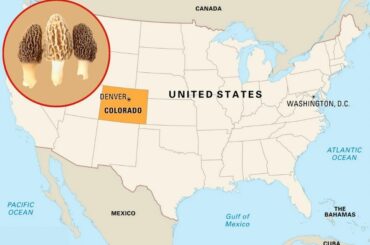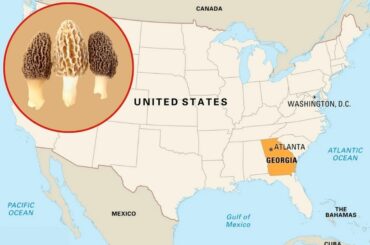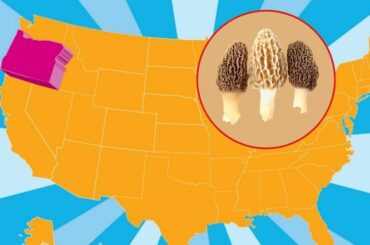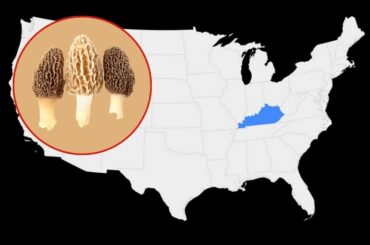Is there a poisonous mushroom that looks like a morel? While morels are not toxic, there are other types of mushrooms that look very similar to a morel, and some are poisonous.
Morels are among the most sought-after wild mushrooms. They have a distinctive, honeycomb-like appearance and a delicious, earthy flavor. Morels are found in spring and early summer, often growing near oak trees. This article will go over mushrooms that look like morels but are actually poisonous.
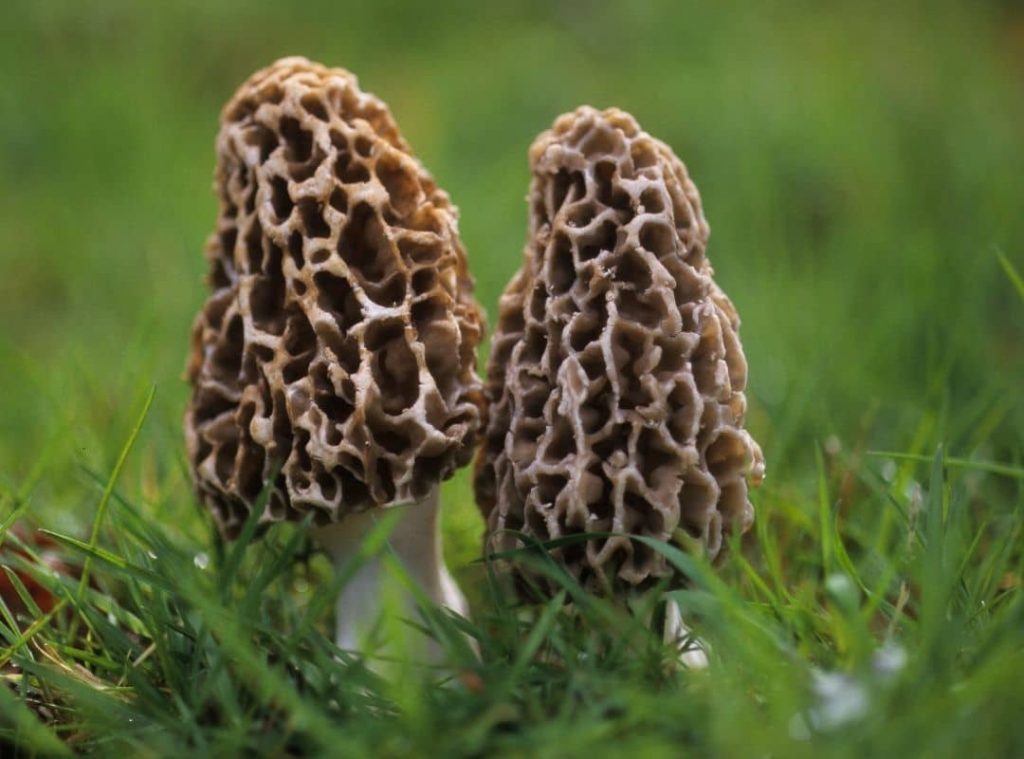
What is a morel?
Contents
Morel is an edible, spongy mushroom that has a honeycomb-like appearance. Morels are found in spring and early summer, often growing near oak trees. They have a distinctive, earthy flavor that many people enjoy. Scientifically named Morchella esculenta, morels are members of the Pezizales order, which includes cup fungi and truffles. There are many different species of morels, all of which are edible.
Is there a false morel mushroom?
Yes. There are several species of false morel mushrooms that, despite their name, are not closely related to true morels. False morels tend to be larger than true morels, with a brain-like or convoluted shape. They are also usually solid, while true morels are hollow.
One of the most common false morels is the Gyromitra esculenta, also known as the brain mushroom. This mushroom has a reddish-brown or gray cap and a white stem. The Gyromitra esculenta is poisonous if eaten raw but can be safely consumed if appropriately cooked (still cautious).
Another common false morel is the Verpa bohemica, also known as the early morel. This mushroom has a yellow or tan cap and a white stem.
The Verpa bohemica is also poisonous if eaten raw but can be safely consumed if cooked properly. So, while some poisonous mushrooms look like morels, those are edible varieties of false morel mushrooms. Still, these false morels are considered poisonous because one can easily misidentify these as true morels and may eat them raw.
How can you distinguish between a morel mushroom and a false morel?
The best way to tell the difference between a morel and a false morel is by looking at the mushroom structure.
- Morels are hollow, while false morels are solid.
False morels often have a cottony structure inside the cap and stem, while the true morel is hollow inside. But there are exceptions. Gyromitra esculenta is hollow inside, but these hollows are chambered. If you cut open the mushroom, you can easily see these chambers.
- The stem of a false morel mushroom attaches to the cap at the center or near the center. The stem of a true morel attaches to the cap at the side.
You have to cut open the mushroom and observe to see this difference. Verpa bohemica has a cap attached to the stem near the center, while Morchella esculenta has a cap attached to the stem at the side.
- False morels often have a brain-like or convoluted shape, while true morels are typically more elongated and “honeycomb-like.”
This is the main difference between a true morel and the false morel (any species). The honeycomb-like or uniformly shaped structure with pits and ridges of the true morel is not found in any false morels. The caps of false morels are “brain-like” or “wavy” or “lobed,” which one can easily differentiate from the cap of a true morel.
- False morels tend to be larger than true morels.
The caps of false morels can be anywhere from 2-12 cm, while the caps of true morels are typically only 2-6 cm.
- The stem of a false morel can be as long as the cap is wide, while the stem of a true morel is usually shorter than the cap is wide.
In short, false morels usually have a longer stem, while true morels have a shorter stem.
- False morels typically have a yellow, reddish-brown, or gray cap, while true morels can be any color but are typically some shade of brown.
The Gyromitra esculenta, for example, has a reddish-brown or gray cap, while the Verpa bohemica has a yellow or tan cap.
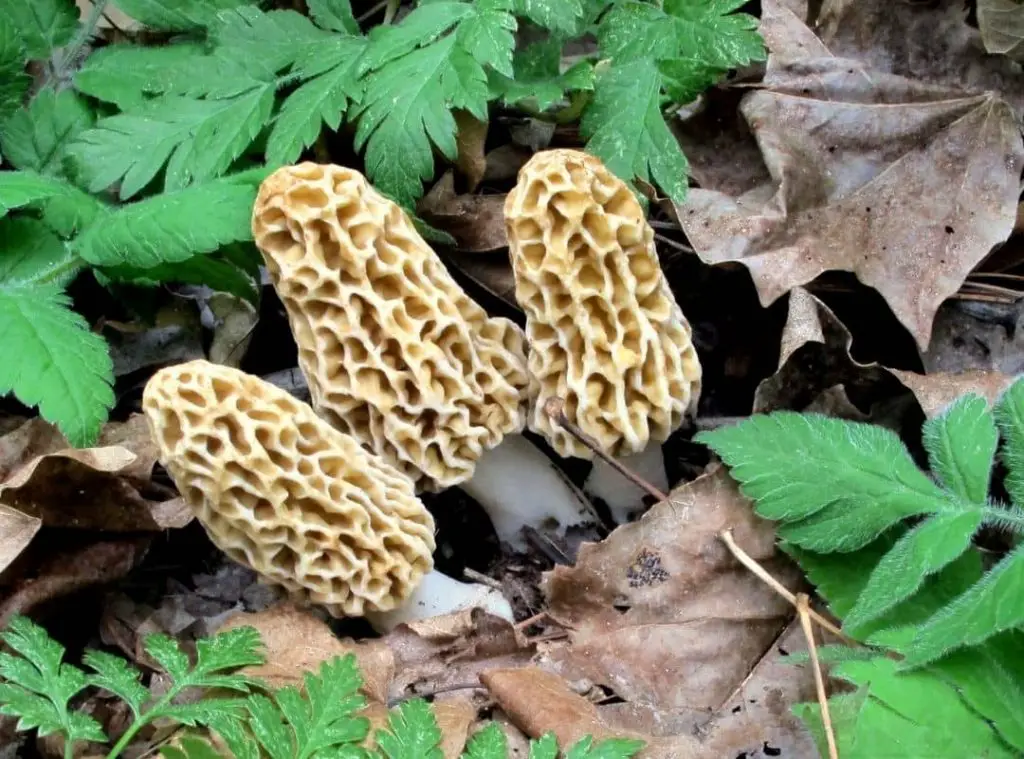
Is there a poisonous mushroom that looks like a morel?
While all wild mushrooms have poisons to some extent (even true morels have some poisons contained), Gyromitra esculenta is known to have more deadly poison than other false morel species. Therefore, most consider this mushroom as the poisonous mushroom that looks like a morel.
Gyromitra esculenta
Gyromitra esculenta is a poisonous mushroom that looks very similar to a morel. If you are not careful, you could easily mistake this mushroom for its edible counterpart. While Gyromitra esculenta does not usually cause death, it can lead to severe liver damage and gastrointestinal problems. However, there are reported fatal cases of Gyromitra esculenta poisoning.
These mushrooms are widely distributed around Europe and North America but can be seen worldwide. What’s terrifying is that these mushrooms share the same habitats as morels. They also start to appear during the same time of the year, which is usually in spring.
Gyromitra esculenta common name
Gyromitra esculenta has several descriptive common names: false morel, brain mushroom, elephant’s foot, turban fungus, beefsteak morel, beefsteak mushroom, and beefsteak fungus. This edible but poisonous mushroom is found in sandy soils near coniferous trees, such as fir and pine.
How to Identify Gyromitra esculenta?
Gyromitra esculenta, as its common name suggests (brain mushroom), has a “brain-like” lumpy, wrinkled cap that is 4–12 cm (1.6–4.7 in) wide. These wrinkles become more distinct as the mushroom matures. The cap is reddish-brown to tan, and the flesh is white to pale yellow. The stem is thick, fleshy, and white to pale yellow. Gyromitra esculenta also emits a faintly pleasant odor. Just like the true morel, the inside of this mushroom is hollowed, but the hollows are more chambered, which is why it is also called a “beefsteak morel.”
When and where to find Gyromitra esculenta?
Gyromitra esculenta can be found in late spring to early summer (May to June in North America). This edible but poisonous mushroom is found in sandy soils near coniferous trees, such as fir and pine.
What Makes Gyromitra esculenta Poisonous?
Gyromitra esculenta contains a toxin called gyromitrin. When eaten, this toxin is transformed into monomethylhydrazine (MMH), which is known as rocket fuel. This MMH is then absorbed by the body and causes liver damage, gastrointestinal problems, and in some cases, death. The severity of the symptoms depends on the amount of toxin consumed and the person’s age and health. Children and elderly people are more susceptible to the effects of this toxin.
There is no known antidote for gyromitrin poisoning, and the only treatment is to provide symptomatic relief.
Can you eat Gyromitra esculenta?
Gyromitra esculenta, despite its toxicity, can be eaten if properly prepared. You should parboil the mushroom several times to remove as much of the toxin as possible. Even after parboiling, there is still a risk of gyromitrin poisoning (mycetismus), so it is essential to be very careful when consuming this mushroom. I would only recommend eating Gyromitra esculenta if you are absolutely sure of what you are doing.
In addition to gyromitrin poisoning, some can have allergies to mushrooms in the same family, like morels, causing similar symptoms. Those who have allergies to mushrooms, in general, must avoid eating this mushroom.
How to cook Gyromitra esculenta?
So, you are an adventurist that wants to try this edible but poisonous mushroom? If you insist, here is how to prepare this mushroom so that you can eat it safely. First, you need to clean the mushrooms thoroughly. Second, parboil the mushrooms in water for at least 15 minutes. The water quantity should be at least three parts water for one part mushroom. Third, discard the water and repeat steps two and three two more times. Fourth, cook the mushrooms as you would any other mushroom.
Important: Since the chemicals generated by gyromitrin vaporize when cooked, this should all be done in a well-ventilated location, and you should keep windows open.
Keep in mind that there is still a risk of gyromitrin poisoning, even after taking these precautions. So, it is vital to be very careful when consuming this mushroom. I would only recommend eating Gyromitra esculenta if you are absolutely sure of what you are doing. As I said before, those who have allergies to mushrooms, in general, must avoid eating this mushroom.
Gyromitra esculenta taste
Those who have tasted and are fortunate enough to survive have confirmed that Gyromitra esculenta has a “mild taste,” which is generic and “not delicious.” After all the work you have to go through to detoxify the mushroom, we would say it’s not worth it to try this mushroom. If you still want to try out false morels, we recommend eating Verpa bohemica instead, which is a morel look-alike but not a deadly poisonous mushroom.
Can you touch false morels?
Yes, you can touch false morels. However, you should avoid handling them too much since the gyromitrin can be absorbed through the skin. If you touch them, make sure to wash your hands thoroughly afterward.
Final Words
Despite the fact that Gyromitra esculenta is poisonous false morel, plenty of people have consumed this mushroom and had no ill side effects. With that being said, this does not mean that the mushroom is safe to eat. Even if the mushroom is properly prepared, there is always a risk of gyromitrin poisoning.
So, it is essential to be very careful when consuming this mushroom. I only encourage consumers to eat Gyromitra esculenta if they are certain of what they’re doing. Whatever you do, Never Ever eat raw Gyromitra esculenta unless you want to die!
Read Next : Verpa Bohemica vs Morel | 6 Major Differences |

